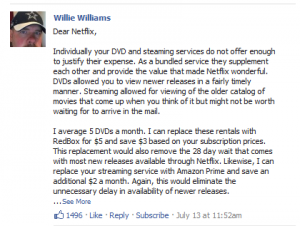Spring Cleaning your Inbox
Increase productivity by eliminating your #1 distraction
Spam, junk mail and sales pitches that we don’t need. The endless stream of email never seems to ending. Its 2014 and living without email is impractical and for most professionals it’s impossible. Email is an invaluable tool and has transformed communication both inside and outside of business but at the same time has become the bane of our existence. We are often slaves to our inbox instead of using this incredible tool to make our lives and professions more efficient and productive. Consider just 30 years ago the idea that you could send an electronic document from your computer to anyone in the world and most people would think you were crazy. Now we do it from our cell phones sitting in Starbucks and are irritated if we don’t get a response in 3 minutes. The invention of email was quickly followed by junk mail, spam and viruses hidden in those messages. But, the world was hooked, we can’t live without email, the value is so great that we tolerate the irritation and inconvenience of the message noise in our inbox as we sort through looking for the valuable information hidden like a needle in a haystack. And even when we find all the important messages they sit there staring back at us, reminding us of projects that need our attention, distracting us for our current work. This cycle quickly can add up to dealing with email for several hours a day or more killing our productivity and efficiency.
It’s clear that productivity and efficiency require moments of focus. Sometimes those moments are 15 minutes and other times several hours are necessary. While writing this article I’ve been distracted 3 or 4 times and have had to regroup, collect my thoughts and then continue the process. This is not efficient and proves that we need to continue the fight for focus and efficiency with our time every day.
So what can we do? First of all work diligently to eliminate junk from ever getting into your inbox. Depending on your email provider (e.g. Google Gmail, Yahoo, Microsoft Exchange) and your mail client software (e.g. Gmail Website, Microsoft Outlook, Apple Mail, various smartphone apps) you already have some of your junk mail blocked. There are also third party tools that can aid in blocking the worst of the offenders. Google does a pretty good job of this and so do the other major mail services. To get into all the specifics would be a whole series of articles. Consult your provider for more options.
Once the mail reaches your inbox it up to you to deal with it. This is where we need to develop habits that allow us to stay efficient and manage our inbox not the other way around. I use a 3-pronged approach to inbox management:
- Unsubscribe, Unsubscribe, Unsubscribe
- Folders
- Keep inbox empty (Inbox Zero)
Unsubscribe: When you come across spam and junk mail you have a few choices. First you can simply delete it. If you find yourself regularly deleting email from the same company you can unsubscribe. Often we subscribe to thing we find interesting but then quickly realize its better to go looking for the information when were ready rather than be bugged by it every day. At the bottom of most messages of the informational type will be an unsubscribe link. Click on it, follow the instructions and get the flow of junk slowed down. Note: Stop subscribing to stuff!
Folders: Folders are critical to efficient use of email. Each mail system you use has the ability to separate saved messages in sub folders. Its important to have a few key folders that you use to manage your messages and enough archive folders to stay organized. Keep it simple. You should use no more than 3 to 5 folders for active. I use a 3-folder system; ACTION, READING and TO BE FILED. The ACTION folder is where I spend my day, these are the items that I decided are a priority and need my attention. The READING or READ LATER folder is used for causal reading that is interesting but non-critical and the TO BE FILED folder is for archived items. Let me be clear I have dozens if not hundreds of folders sorted by the various business and personal activities that I’m involved in and sub divided as necessary to organize all the activity. The difference is this is where I file away messages after I have acted on them. The 3 primary folders are my daily activity folders.
Inbox Zero: This is often the most difficult for most people to get their head around. They can’t imagine having 0 messages. Many people let their inbox manage their day. If they move a message they would never remember to act on it. But if you are diligent and have a system then you can manage your priorities and your mail instead of the other way around. The idea of Inbox Zero is to daily purge your inbox of all messages. Simply go through every message and delete, move it to one of the three action folders or act on it. You start from the top and go one by one through every item. The easiest are the junk that can be deleted immediately. The more difficult are the interesting items that can distract us for hours but are not a priority. Do not get sidetracked for an hour looking at a new car that you’re not going to buy anyway. You have 5 seconds to decide if its something you want to save for later or just needs to be deleted. If you’re not sure then delete it. Most email systems allow you to find delete items anyway. If you want to save it for later move it to a READ LATER folder. This should leave us with the items that are legitimate items for us to act on. Use the two-minute rule that says if you can complete the action in two minutes or less do it now and get it done. If it will take longer then move it to your ACTION folder. That’s right don’t work on it now, now your focus is on your inbox not browsing your mail for something to work on. This is where you will go to look for your work priorities not your inbox. Finally, anything that is complete or doesn’t require an action then move it to the appropriate archive folder or to a TO BE FILED folder that can be filed later. I use a TO BE FILED folder when I’m purging from my smart phone. Then I can archive these later when I have a few minutes of down time or I need to take a break from bigger projects.
I usually purge my inbox at least once a day, although it doesn’t last very long. New mail is flowing in 24/7 but my attention is on my ACTION folder not my inbox. The key to managing your inbox and achieving inbox zero is being intentional. Schedule time each day to go through you inbox. The ACTION folder is what you should work from. You are now deciding your priorities not the entire world. If you need to have a CRITICAL folder to differentiate priority that great but use caution because if you have too many folders you will just shift the chaos from your inbox to your folders. Getting back to the inbox, if the next message is junk delete it, if its informational but doesn’t require action move it to the TO BE FILED folder or directly to the archive folder. I use the TO BE FILED folder primarily for when I’m purging my inbox from my smart phone.
Start today and stay true to your ACTION folder. Don’t let your Inbox set your priorities. You are on your way to more efficiency and effectiveness.








